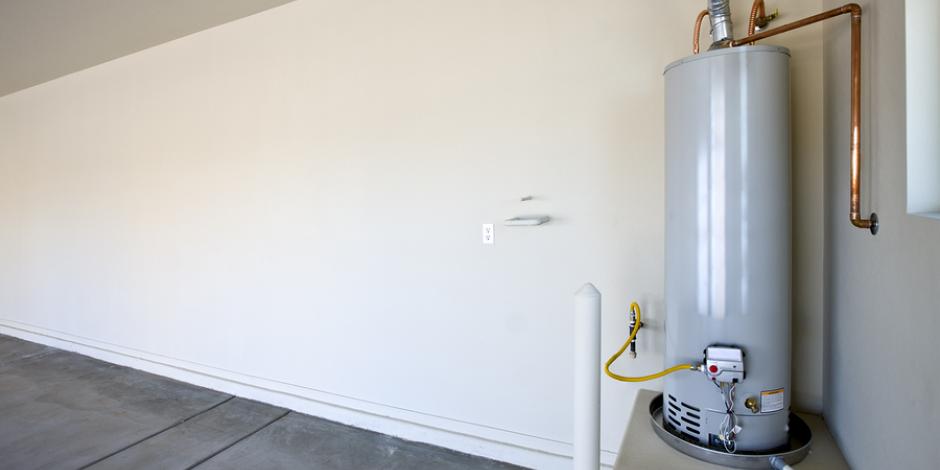We've uncovered this post involving Tips on Maintaining a Water Heater down the page on the net and accepted it made perfect sense to talk about it with you over here.

Hot water is essential for everyday comfort, whether it's for a rejuvenating shower or cleaning recipes. To guarantee your warm water system runs effectively and lasts much longer, normal maintenance is crucial. This write-up offers useful suggestions and understandings on exactly how to maintain your home's warm water system to prevent disturbances and expensive repairs.
Introduction
Preserving your home's hot water system could appear daunting, yet with a few straightforward steps, you can guarantee it runs efficiently for years to find. This overview covers whatever from recognizing your warm water system to DIY maintenance suggestions and recognizing when to hire expert aid.
Importance of Maintaining Your Warm Water System
Normal upkeep not just extends the life expectancy of your warm water system yet also ensures it operates effectively. Disregarding upkeep can bring about decreased effectiveness, greater power costs, and even early failing of the system.
Indicators Your Warm Water System Needs Maintenance
Knowing when your hot water system requires focus can prevent significant problems. Look out for signs such as inconsistent water temperature, unusual noises from the heating unit, or rustic water.
Flushing the Water Heater
Flushing your hot water heater gets rid of sediment buildup, improving efficiency and lengthening its life.
Monitoring and Changing Anode Rods
Anode rods prevent corrosion inside the tank. Inspecting and changing them when broken is crucial.
Facility Concerns Calling For Specialist Aid
Instances consist of significant leakages, electric issues, or if your water heater is continually underperforming.
Routine Professional Upkeep Perks
Expert upkeep can include extensive inspections, tune-ups, and ensuring compliance with safety criteria.
Evaluating and Changing Temperature Settings
Adjusting the temperature level setups makes sure optimal efficiency and security.
DIY Tips for Upkeep
You can perform numerous maintenance jobs yourself to keep your warm water system in top problem.
Checking for Leakages
Frequently inspect pipelines and connections for leakages, as these can result in water damage and higher costs.
Recognizing Your Warm Water System
Before diving right into upkeep tasks, it's helpful to recognize the standard parts of your hot water system. Commonly, this consists of the water heater itself, pipes, anode poles, and temperature controls.
Monthly Maintenance Tasks
Regular month-to-month checks can assist catch small problems prior to they escalate.
Examining Stress Relief Valves
Evaluating the pressure relief valve guarantees it works appropriately and stops too much pressure buildup.
Protecting Pipes
Shielding hot water pipelines decreases heat loss and can conserve energy.
When to Call a Specialist
While DIY upkeep is valuable, some problems call for expert proficiency.
Conclusion
Normal maintenance of your home's warm water system is vital for efficiency, durability, and cost financial savings. By following these ideas and recognizing when to seek specialist help, you can make certain a reliable supply of hot water without unanticipated disruptions.
How to Maintain an Instant Hot Water Heater
- Before tinkering with your hot water heater, make sure that it’s not powered on. You also have to turn off the main circuit breaker and shut off the main gas line to prevent accidents. Also turn off the water valves connected to your unit to prevent water from flowing into and out of the appliance.
- 2. When you’re done, you have to detach the purge valves’ caps. These look like the letter “T” and are situated on either side of the water valves. Doing so will release any pressure that has accumulated inside the valves while at the same time avoid hot water from shooting out and burning your skin.
- 3. When the purge valves’ caps are removed, you have to connect your hosing lines to the valves. Your unit should have come with three hoses but if it didn’t, you can purchase these things from any hardware or home repair shops. You can also get them from retail stores that sell water heating systems. Read the user’s manual and follow it to complete this task properly. When the hosing lines are connected, open the purge port’s valves.
- 4. You should never use harsh chemical cleaners or solutions when cleaning your unit. Make use of white vinegar instead. It should be undiluted and you’ll probably use about 2 gallons.
- 5. Now flush your water heater. This task should probably take about 40 minutes. We can’t give you specific directions for this because the procedure is carried out depending on the type, model and brand of your heater. With that being said, refer to the user’s manual.
- 6. When you’re done draining the unit, you have to turn off the purge port valves again. Remove the hosing lines that you earlier installed on each of the water valves. Put the valve caps (purge port) back in their respective places and be very careful so as not to damage the rubber discs that are found inside these caps.
- 7. Now that everything’s back in place, check your user’s manual again to find out how to reactivate your water heating system.
- 8. Once it is working, turn one of your hot water faucets on just to let air pass through the heater’s water supply pipes. Leave the tap on until water flows smoothly out of it.
https://www.orrplumbing.com/blog/2014/september/how-to-maintain-an-instant-hot-water-heater/

We were shown that write-up on What Kind of Maintenance Do Water Heaters Need? from a friend on another web property. Please pause to promote this entry if you enjoyed reading it. Thanks a lot for being here. Revisit us soon.
Call Today
Comments on “Useful Techniques for Caring for Your Home's Hot Water SystemExpert Advice on Maintaining Your Home's Hot Water System”